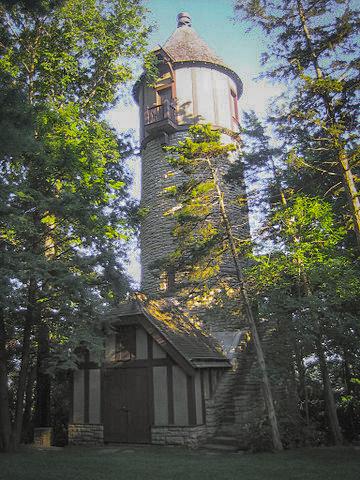What do you do when you face a stressful life event? Strategies obviously vary, ranging from getting drunk to binging on Netflix to talking with a friend. Individuals differ in their habitual responses to stress, and these differences significantly impact well-being.
I’ve realized as of late how I often deal with stress by seeking a source of awe, something vast that stretches the sense of what’s possible in the moment. The experience of awe seems so distinct from the experience of stress, but reflecting on the intersection between my life experience and some new research just published by the American Psychological Association, I’m realizing how this response contributes to the ability to successfully cope with difficult times.
For instance, a few weeks ago, while a loved one underwent a long and intense surgery at one of the Mayo Clinic hospitals in Rochester, Minnesota, my wife and I decided to go for a walk. Whereas our feeling inside the hospital involved fear, agony, and dread, the simple act of getting into the sunlight and seeing the nearby trees brought us some calm. We eventually came across signs pointing us to the Plummer House – former home of Mayo partner and founder Dr. Henry Stanley Plummer – so we walked in that direction, ultimately finding the breathtaking English Tudor mansion. We explored the grounds but came to a stop, transfixed, at one of the most unusual buildings we’d ever seen – actually the old water tower for the mansion – but which my wife and I referred to as “Rapunzel’s Tower.” The architecture of the tower truly “blew our minds” for what was possible with a building, and we were lifted out of our troubles for just a moment. When our attention came back to ourselves and the situation at hand, we returned with greater clarity, strength, and connection to face the difficulties to come.

In a recent article, six studies demonstrated how awe experiences diminish feelings of stress. For instance, in one study, participants were brought to the top of a 200-foot clock tower on the campus of the University of California at Berkeley. Half were randomly assigned to the awe condition, which involved gazing out the tower upon the Bay, San Francisco, and the Golden Gate Bridge; the other half were randomly assigned to a control condition, which involved gazing upon the inside of the tower. Although both groups experienced less stress associated with the hassles they reported having than before being brought to the tower (consistent with research showing the stress benefits of taking a walk outside), individuals in the awe condition, in particular, experienced greater reductions in stress, compared with individuals in the control condition. In part because of this, participants in the awe condition also reported higher satisfaction with their lives.
Why does awe decrease stress? Based on their results, the researchers suggested that:
“In the presence of something vast that transcends one’s understanding of the current context, we are often in the state of awe. As this profound feeling may shift our attention away from focus only on the self… bothersome daily concerns seem to be less salient and daily stress becomes less intense.”
This research encourages us as individuals to seek sources of awe to help us deal with the demands of stress. I can’t help but wonder, though, what if awe was intentionally and systematically made more accessible as a resource where stress is highest, such as at prisons, nursing homes, and hospitals? There is precedent in at least one large institution for such an effort: the Minneapolis Institute of Arts has systematically integrated a focus on awe, empathy, and tenderness throughout its Museum in recent years. Furthermore, great strides have been made toward integrating green spaces into hospitals and, to a lesser extent, prisons and nursing homes. Still, an emphasis on awe suggests a potentially different and wider pathway to supporting resilience, growth, and well-being in such settings.
There are many ways individuals can experience awe that institutions might harness. Some possibilities include:
- Highlighting the history or stories of inspiring founders, staff, or residents, even showcasing relics associated with their good works;
- Encouraging individuals to watch and share together in televised events most likely to elicit awe (such as the major athletic competitions, documentaries, movies, and performances);
- Featuring live music likely to move people to tears in common spaces or even individual or small group contexts;
- Using chapel or meditation spaces to focus on the transcendent, and making these spaces as transcendent in themselves as possible as well;
- Encouraging individuals to write about and share times with each other in which they have most felt awe in their lives;
- Using green spaces and “healing gardens” for recommended daily awe walks to draw people’s attention to the vastness of nature, including intricate details of plants or animals; and
- Educating people about these efforts, urging individuals to seek awe as a way to manage their stress and increase their vitality.
To support individuals through difficult times, many kinds of resources may be valuable. People can be coached how to cope with stress more effectively, in general. The new research on awe suggests another way to systematically nurture holistic health, well-being, and growth as well.
This article first appeared on www.psychologytoday.com
